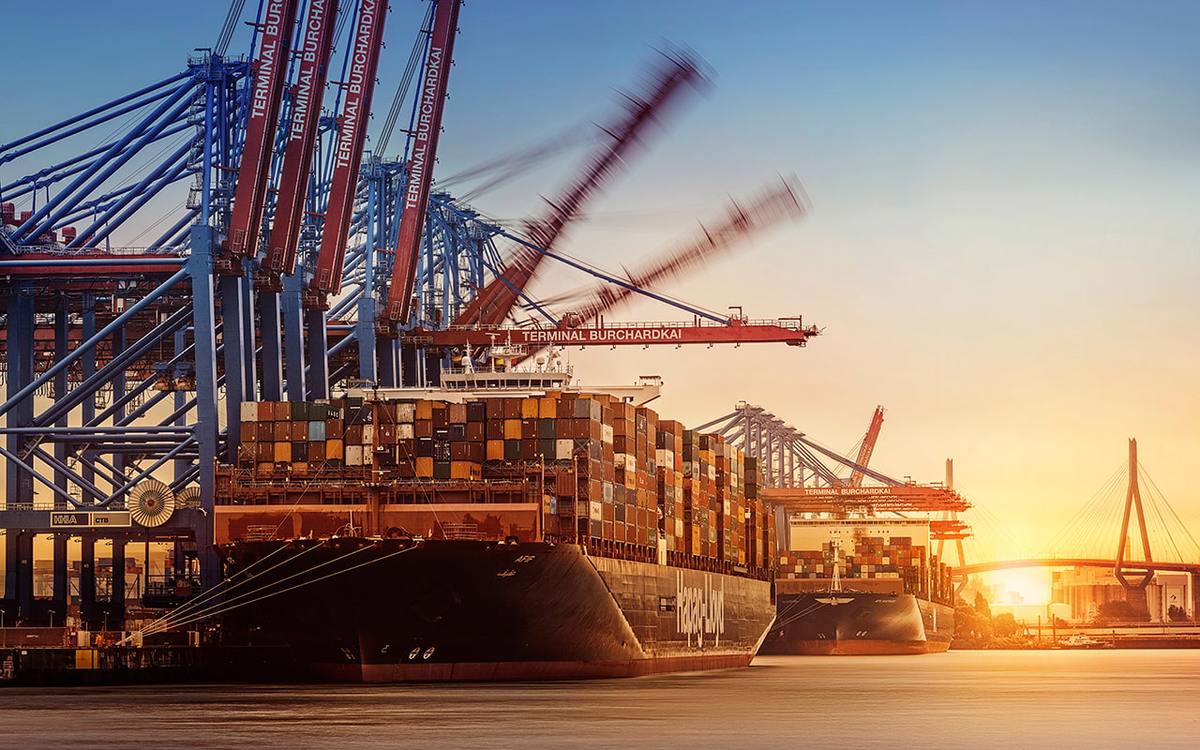Hapag-Lloyd burned more biofuels and LNG in 2023
German shipping major Hapag-Lloyd highlighted bio- and e-methane as future marine fuel options to achieve its self-imposed target of net-zero GHG emissions for its entire fleet by 2045.
 PHOTO: Hapag Lloyd's container vessel Afif at the Burchardkai Container Terminal in the Port of Hamburg. Hapag Lloyd
PHOTO: Hapag Lloyd's container vessel Afif at the Burchardkai Container Terminal in the Port of Hamburg. Hapag Lloyd
Hapag-Lloyd has set an interim goal of a 30% reduction in greenhouse gas (GHG) intensity for its entire fleet of 266 vessels by 2030, compared to 2019 levels. It has started bunkering biofuels and LNG on some of its vessels and plans to incorporate bio- and e-methane into its future fuel mix.
Hapag-Lloyd bunkered 213,000 mt of biofuel blends across 45 out of its 266 vessels in 2023, as outlined in its sustainability report. This is compared to 120,500 mt of biofuel blends consumed across 24 vessels in 2022.
Biofuel bunkering was mainly conducted in Rotterdam and Singapore. It also bunkered biofuel in Genoa in Italy, Barcelona in Spain, and Jebel Ali in the UAE for the first time. Fatty acid methyl ester (FAME)-based biofuel was blended with varying proportions of VLSFO, except in Port Antwerp, where LSMGO was used instead of VLSFO.
It is now exploring further access to biofuel bunkering at different ports across South Korea, West Africa, South Europe and the West Coast of the US. “Volume contracts have been concluded with major biofuel suppliers to create security of supply,” it reported.
LNG and cleaner LNG alternatives
When it comes to LNG, Hapag-Lloyd’s LNG bunker consumption reached 22,769 mt in 2023, a significant rise from 4,582 mt in 2022.
It currently has 12 dual-fuel vessels capable of running on liquefied natural gas (LNG) along with conventional marine fuels on its orderbook, according to the report. Three of the 12 vessels entered service in 2023, and another nine are scheduled to go into operation by 2025, the report said. In addition, it has also retrofitted one vessel to LNG dual-fuel engine.
Hapag-Lloyd will explore the use of bio- and e-methane to further lower the GHG footprint of its LNG-capable vessels, the report noted. “Although we see fossil LNG primarily as a bridging fuel, propulsion technology using liquefied gas is viable for the future since LNG-powered vessels can also be operated with biological and synthetic methane as an alternative in the mid-term,” it stated.
Bio- and e-methane, like LNG, are methane molecules produced using different methods. It is possible to use them as a drop-in fuel in LNG-capable vessels without the need for any modifications.
Compared to LNG, these fuels release very little methane emissions during production because of their non-fossil origin. This makes bio- and e-methane cleaner bunker fuel alternatives to LNG since they can significantly reduce vessel’s emissions on a well-to-wake basis.
It plans to launch a bio-methane bunkering pilot in Singapore this year as part of the Singapore-Rotterdam Green Shipping Corridor. It is also working on a project to supply e-methane beginning in 2026, the exact timeline for the use of synthetic methane on its dual-fuel vessels remains unclear at present.
By Konica Bhatt
Please get in touch with comments or additional info to news@engine.online





